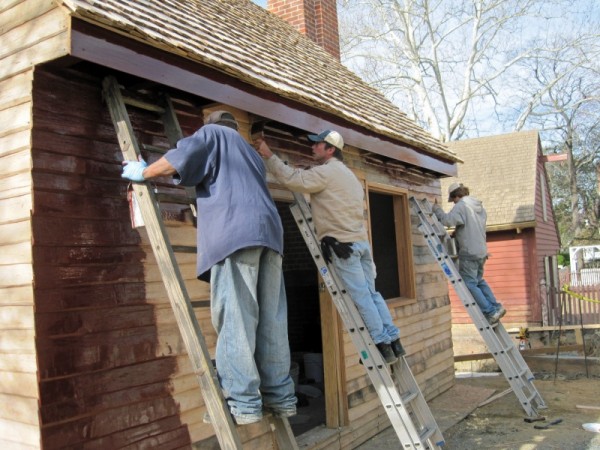Walk through the restoration of an 18th-century painting, a modern process that reveals an ancient artist’s hand….
We built this city: Meet the carpenter
Cream or Yellow?
Many of you have watched and wondered about the Armoury’s changing color scheme over recent weeks. In mid- February, painters applied a coat of yellow paint (below) to the building’s exterior. Less than a month later, that color was painted over with cream (above). Call it research in action, but for the record (and as you will soon see), the final paint color on the Armoury is cream. Because this blog provides a forum for complete transparency about our design and building decisions, we thought we’d explain the process of reaching our color choice.
…
Tar Painting Anderson’s Kitchen
Webcam viewers will notice that, having dried after early April rains, the Anderson kitchen now sports a coat of paint. The decision to use tar paint is a practical one. Used throughout the 17th, 18th, and 19th centuries, tar paint offers a protective coating that is easily made and applied.
…
Finding the Tin Shop
Corroborating evidence for the presence of a tinsmith can be found in a daybook for Anderson’s Armoury, a document owned by the Daughters of the American Revolution, and transcribed by Ken Schwarz. On June 25, 1779, Anderson records the addition of Nathaniel Nuthall, a “tin man,” to his workforce. The scale of production suggests that Nuthall was one of many tinsmiths employed at the Armoury. Our question now is: where on the property did they work, and where will we station our tinsmiths when site interpretation begins?
…
- « Previous Page
- 1
- …
- 3
- 4
- 5
